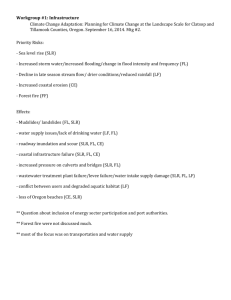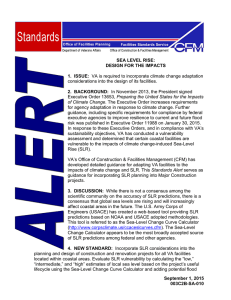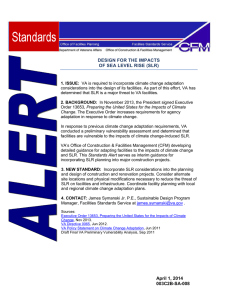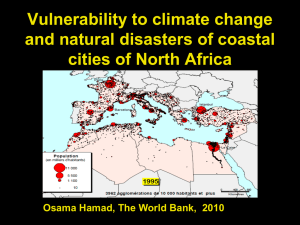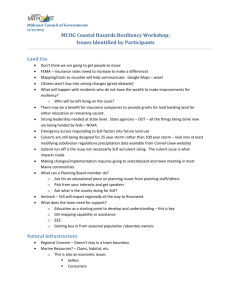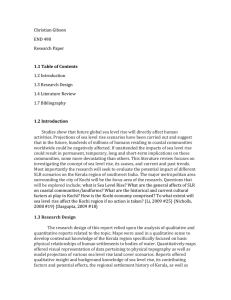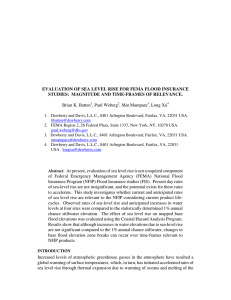15.023J / 12.848J / ESD.128J Global Climate Change: Economics, Science,
advertisement
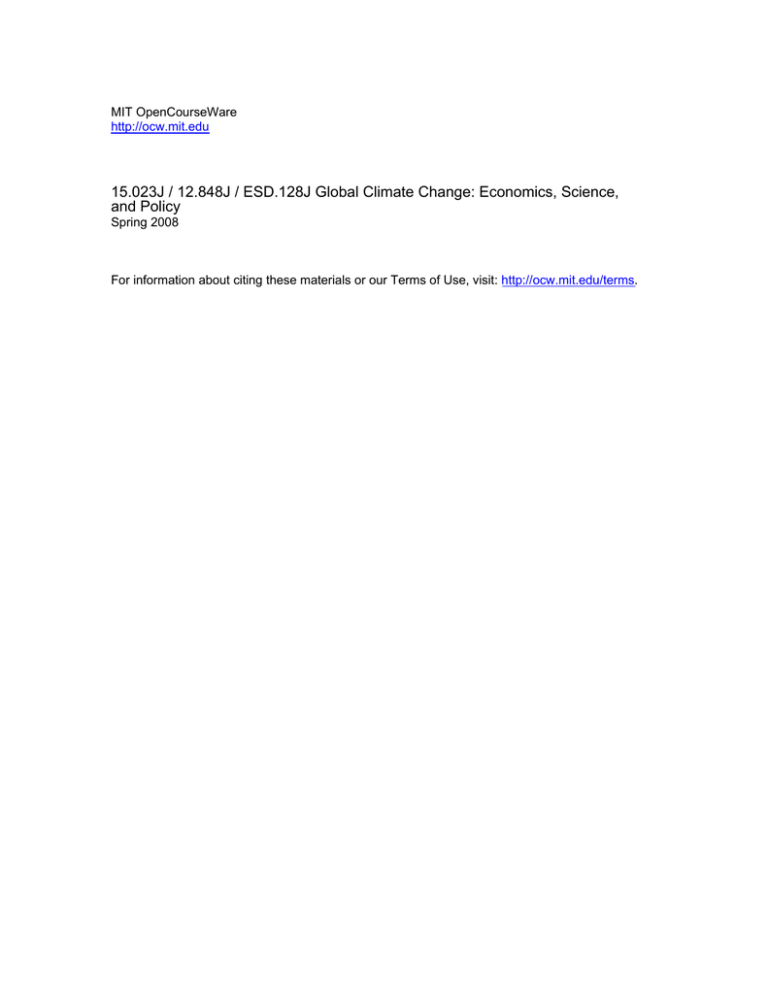
MIT OpenCourseWare http://ocw.mit.edu 15.023J / 12.848J / ESD.128J Global Climate Change: Economics, Science, and Policy Spring 2008 For information about citing these materials or our Terms of Use, visit: http://ocw.mit.edu/terms. Sea-level Rise Science and Impacts Travis Franck 15.023 / 12.848 / ESD.128 16 April 2008 Agenda • Discussion of IPCC reports and SLR estimates • Scientific controversy and the long tail • Social coastal-zone trends and impacts Motivation: Millions live near the coast Courtesy of the Socioeconomic Data and Applications Center, Columbia University. Used with permission. The World: Population Density, 2000. Center for International Earth Science Information Network (CIESIN), Columbia University; and Centro Internacional de Agricultura Tropical (CIAT). 2005. Gridded Population of the World Version 3 (GPWv3). Palisades, NY: Socioeconomic Data and Applications Center (SEDAC), Columbia University. Available at http://sedac.ciesin.columbia.edu/gpw. SLR Hotspots SLR Map of Florida SLR Map Bangladesh Causes and Projections • Causes are thermal expansion, glacial melt, subsidence or uplift => Relative SLR • Historic: • Sea level rose at an average rate of about 1.8 mm/year during the years 1961-2003. The rise in sea level during 1993-2003 was at an average rate of 3.1 mm/year. It is not clear whether this is a long-term trend or just variability. • Projections • 9 to 88cm by 2100 (IPCC TAR, 2001) • 18 to 58cm, plus 10-20cm for polar glaciers (IPCC AR4, 2007) US SLR Trends Source: http://www.epa.gov/climatechange/science/recentslc.html Joint Program SLR Estimates 7 No Policy CCSP 750 CCSP 550 6 5 4 3 Probability Density 2 1 0 0.0 0.2 0.4 0.6 0.8 1.0 Sea Level Rise 2000-2100 (m) (thermal expansion + small glacial melt) Joint Program SLR Odds Sea Level Rise > 0.3m Sea Level Rise > 0.6m No Policy 19 in 20 3 in 20 Stabilize at 750 17 in 20 1 in 25 Stabilize at 650 15 in 20 1 in 50 Stabilize at 550 11 in 20 <1 in 400 Stabilize at 450 1 in 4 < 1 in 400 Large Ice Sheets and Dams • The IPCC and MIT ranges don’t include SLR because of Antarctica and Greenland • Two studies estimate much higher ranges (~0.8m to 1.5m) by 2100 • Chao et al. (2008) estimate that reservoirs and other inland water impoundments have held large amounts of mountain glacial melt Photograph of melting ice sheet removed due to copyright restrictions. • Historical sea-level estimate would be biased low Economic and Social Trends • Historically, coasts have been important for commerce and travel • Vast amounts of trade enters the US via ship • Recent decades: population and capital investment along the coast has grown faster than the national average • Costs of tropical storms have increased dramatically in recent history Total losses per year from Atlantic tropical cyclones in 2005 dollars Billions (11-year centered average) 125 Losses (US 2005 dollars) 100 75 50 25 0 1900 1910 1920 1930 1940 1950 1960 1970 1980 1990 2000 Year Figure by MIT OpenCourseWare, adapted from Pielke Jr. et al., Natural Hazards Review, 2008. Economic and Social SLR Studies • Titus (1988) gave economic estimates of flooded US land value • Yohe et al (1996) show that information could lower costs dramatically if the markets could react accordingly • Gibbons and Nicholls (2006) show that people might make different choices than purely rational assumptions would dictate • Highlight: • Non-linearities in the social response • Limited foresight, bounded rationality • Value of information (econ) Coastal Zone Managers Perceptions • Recent Federal Studies: • NAS - “Potential Impacts of Climate Change on U.S. Transportation” • CCSP 4.1 - “Coastal Sensitivity to Sea Level Rise” • Coastal managers are not planning for future sea-level rise • New infrastructure projects could be at risk • Zoning and building codes could be refined or improved to reduce risk • If they have considered SLR, confusion over what values to consider Coastal Zone Issues • Fast economic growth • Large amount of critical infrastructure • Value natural ecosystems • Beaches for tourism and coastal protection • Wetlands for habitat, coastal protection, fishing • Non-climate environmental issues, including river runoff and sedimentation • How to manage coastal zones? • Benefit/cost? • Cost effectiveness? • Role of science? Questions? (Remember no class Monday)
